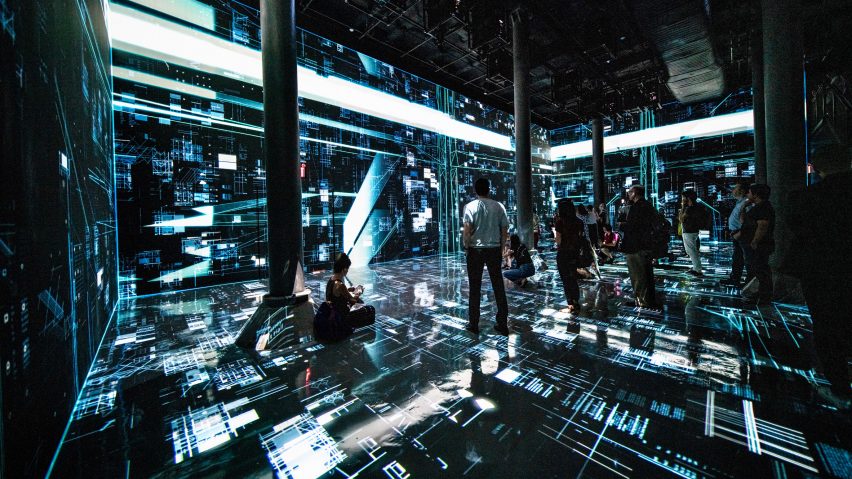
Refik Anadol uses AI to create mesmerising film of New York City
Turkish artist Refik Anadol has used artificial intelligence to turn millions of photographs of New York into the Machine Hallucination film.
Anadol and his team created the 30-minute-long Machine Hallucination movie for digital art space Artechouse, located in Chelsea Market, New York.
The project used machine intelligence to source millions of photos of New York City and then processed them to create the visuals.
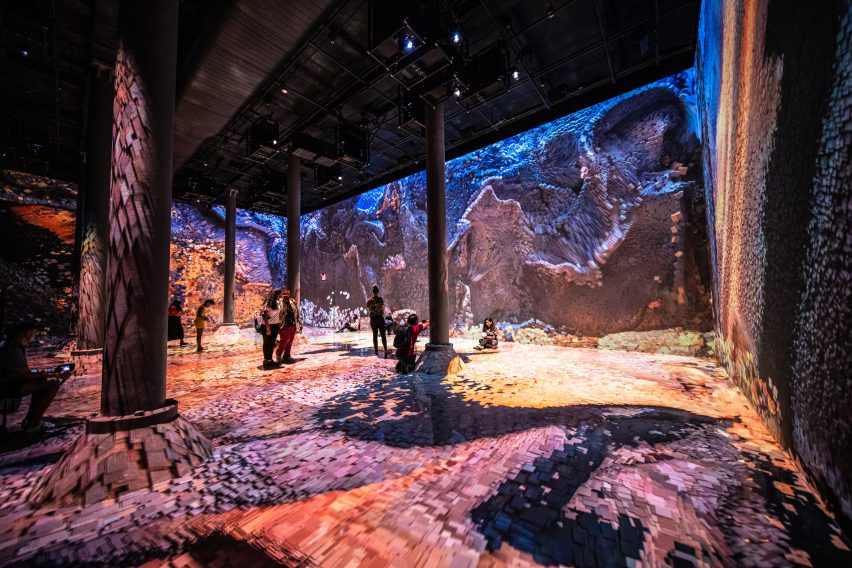
From the images the AI creates visuals of New York buildings and numbers and letters that are played out as if they are being filtered, alongside more abstract glacial forms that comprises chunky, colourful pixels.
Anadol likens the output to reshuffled memories of a human dream. He used a similar process to create the dream-like visuals projected across Frank Gehry's Walt Disney Concert Hall, but said that Machine Hallucination is "the peak point" of his exploration into artificial intelligence.
To create the project Anadol trained the StyleGAN algorithm – an open-source tool created by tech company NVIDIA to process photographs of New York and turn them into visuals perceptible to humans.
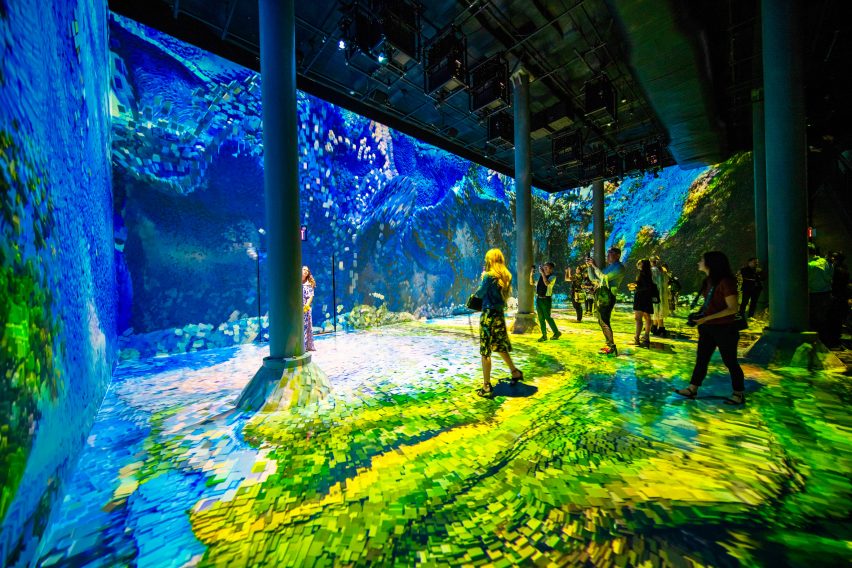
"I thought would happen if you took the same algorithm to simulate synthetic architectural memories of the city of New York," the Los Angeles-based artist told Dezeen.
"So it's a pretty fascinating way of collecting data and using AI to narrate the invisible world, invisible cultural collective memories of New York," he added. "You can create any building from any perspective available to see the invisible of the city."
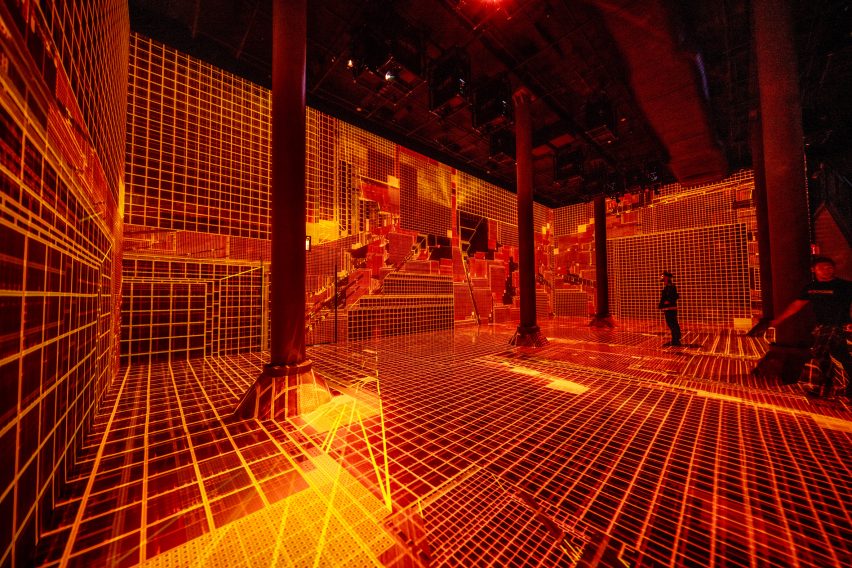
To achieve this, he used an algorithm to scour the internet for publicly available images of New York City, eventually generating a database of 213 million images.
"We downloaded every single available, photographic memory of New York; it's the largest dataset ever created for an artwork," he said.
Another algorithm was used to remove all images of people, leaving just the built environment. "In the end [there were] 9.5 million images left for AI to learn from and dream from," Anadol said.
At this point the machine stores information in latent space. Anadol used another algorithm to make it produce visuals for the film, with the aim to expose what might be happening in that state where intelligence is gathering and learning from data.
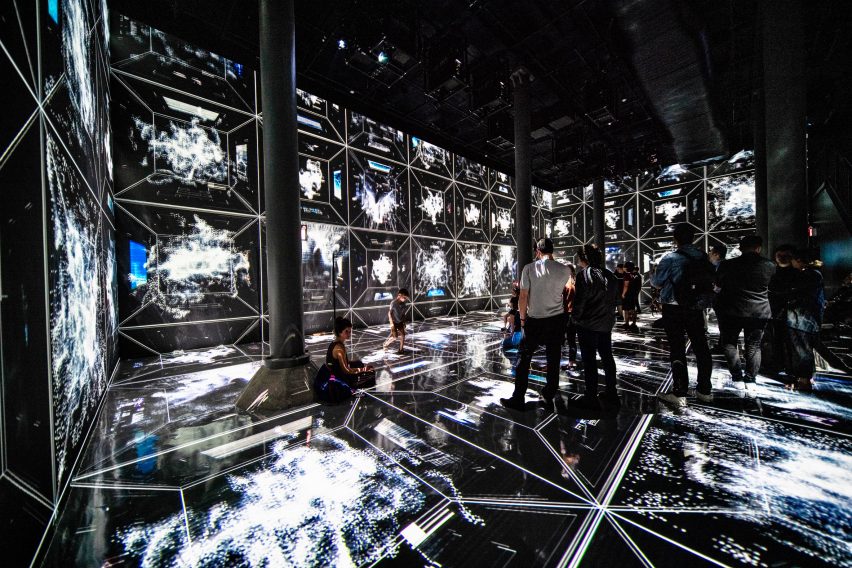
"An artist and as a researcher I'm really inspired about how we can make the invisible more visible," he said. "So to make it visible, we created another algorithm that would allow us to visualise the world that the machine can dream."
He admits, however, that he helped create some of the output. "Basically, as an artist I took my brush, and stuck it into the machine's mind and paint architecture with machine's consciousness," he said.
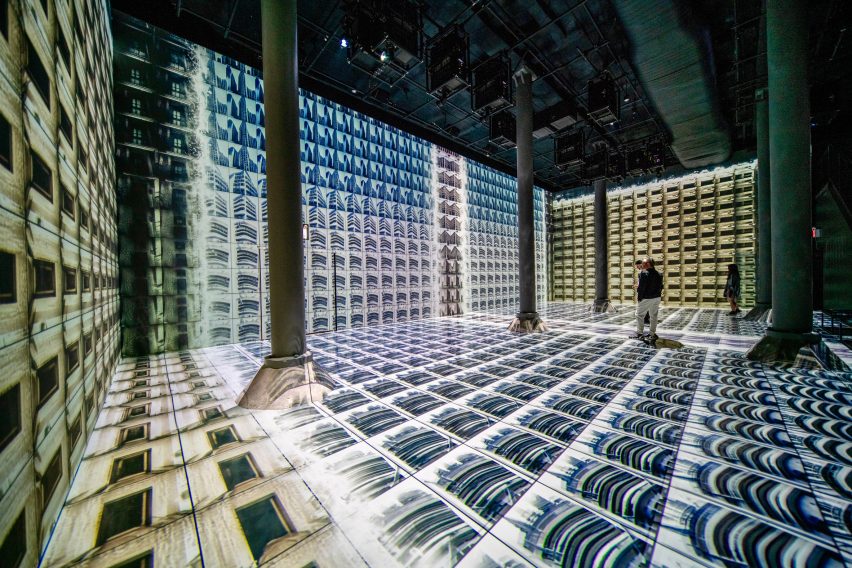
The film is projected across the floors and three walls of the 6,000-square-foot (557-square-metre) gallery, which occupies an old boiler room located in Chelsea Market. The visuals are accompanied by audio that intelligence created based on publicly available recordings and broadcasts of the city’s actual sounds.
Visitors are invited to lounge on cushions and enjoy the film as it plays out on repeat in the gallery – a 6,000-square-foot (557-square-metre) gallery, which occupies an old boiler room located in Chelsea Market.
Machine Hallucination is set to be on show at Artechouse until early next year.
Photography is by Refik Anadol.